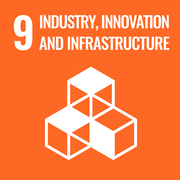
Classifying metal nanoparticles with AI
Metal nanoparticles play an important role in various technological applications, such as optics and catalytic processes. Of fundamental importance for their functionality are their shape and crystal structure, characteristics that, due to the high fraction of surface atoms, can be highly variable and difficult to distinguish.
A study published in the journal ACS Nano, coordinated by Alberto Giacomello and Antonio Tinti of the Department of Mechanical and Aerospace Engineering of Sapienza University of Rome, in collaboration with the University of Genoa, the Università Politecnica delle Marche and the Istituto Italiano di Tecnologia, proposes an artificial intelligence technique capable of automatically subdividing and classifying nanoparticle structures based on their similarity, differentiating in great detail similarities in the shape of structures or the presence of particular crystalline defects.
Using neural networks similar to those used in image analysis, it was possible to generate a three-dimensional map of the data. In this way, the researchers were able to easily distinguish the different structures present in gold, silver and copper nanoparticles, with an unprecedented level of detail. Furthermore, this approach made it possible to follow and understand the elementary steps of a transition between two specific structures, paving the way for new accelerated simulation techniques.
"First and foremost, it was necessary to identify a physical quantity capable of describing the differences between the various structures, the radial distribution function", says Giacomello. "Then, by applying artificial intelligence techniques, specifically machine learning, to the latter, it was possible to extract and analyse the information contained in the starting physical quantity more easily. In addition, we were able to rely on a very extensive database of structures from molecular dynamics simulations previously carried out by the research group".
The research was funded by the Progetti di ricerca di rilevante interesse nazionale (Prin) Call 2017 'Understanding and Tuning Friction through nanOstructure Manipulation (UTFROM)', coordinated by Riccardo Ferrando, a metal nanocluster expert at the University of Genoa, and the Sapienza research unit is coordinated by Alberto Giacomello.
References:
Charting Nanocluster Structures via Convolutional Neural Networks - Emanuele Telari, Antonio Tinti, Manoj Settem, Luca Maragliano, Riccardo Ferrando, and Alberto Giacomello – ACS Nano (2023). https://doi.org/10.1021/acsnano.3c05653
Further Information
Alberto Giacomello
Department of Mechanical and Aerospace Engineering
alberto.giacomello@uniroma1.it
Antonio Tinti
Department of Mechanical and Aerospace Engineering
antonio.tinti@uniroma1.it

